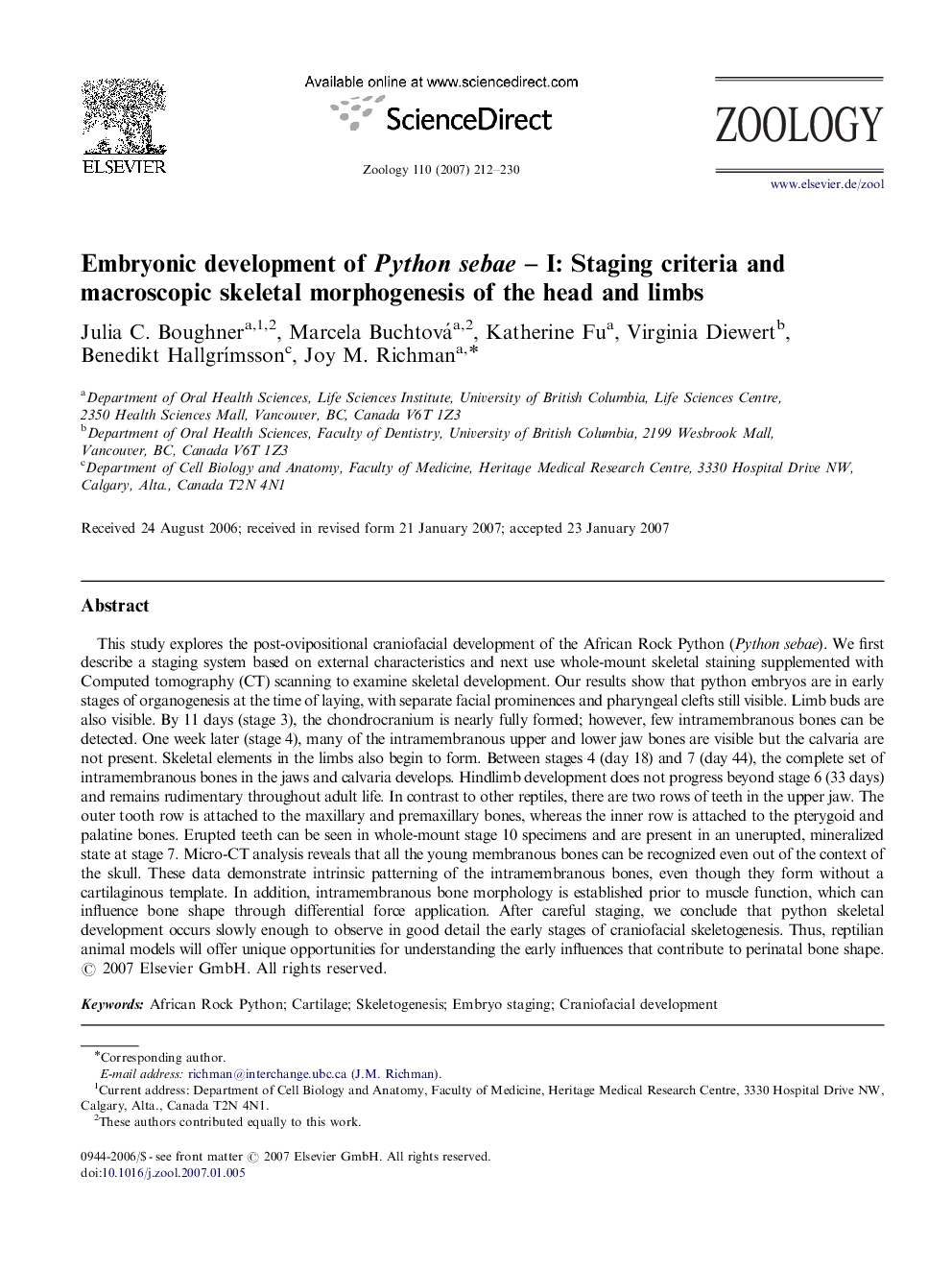| Article ID | Journal | Published Year | Pages | File Type |
|---|---|---|---|---|
| 2791409 | Zoology | 2007 | 19 Pages |
This study explores the post-ovipositional craniofacial development of the African Rock Python (Python sebae). We first describe a staging system based on external characteristics and next use whole-mount skeletal staining supplemented with Computed tomography (CT) scanning to examine skeletal development. Our results show that python embryos are in early stages of organogenesis at the time of laying, with separate facial prominences and pharyngeal clefts still visible. Limb buds are also visible. By 11 days (stage 3), the chondrocranium is nearly fully formed; however, few intramembranous bones can be detected. One week later (stage 4), many of the intramembranous upper and lower jaw bones are visible but the calvaria are not present. Skeletal elements in the limbs also begin to form. Between stages 4 (day 18) and 7 (day 44), the complete set of intramembranous bones in the jaws and calvaria develops. Hindlimb development does not progress beyond stage 6 (33 days) and remains rudimentary throughout adult life. In contrast to other reptiles, there are two rows of teeth in the upper jaw. The outer tooth row is attached to the maxillary and premaxillary bones, whereas the inner row is attached to the pterygoid and palatine bones. Erupted teeth can be seen in whole-mount stage 10 specimens and are present in an unerupted, mineralized state at stage 7. Micro-CT analysis reveals that all the young membranous bones can be recognized even out of the context of the skull. These data demonstrate intrinsic patterning of the intramembranous bones, even though they form without a cartilaginous template. In addition, intramembranous bone morphology is established prior to muscle function, which can influence bone shape through differential force application. After careful staging, we conclude that python skeletal development occurs slowly enough to observe in good detail the early stages of craniofacial skeletogenesis. Thus, reptilian animal models will offer unique opportunities for understanding the early influences that contribute to perinatal bone shape.
